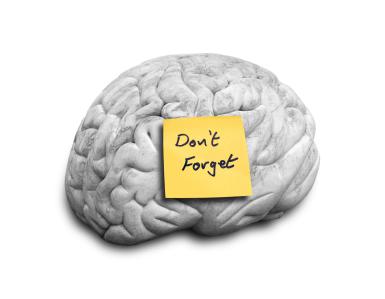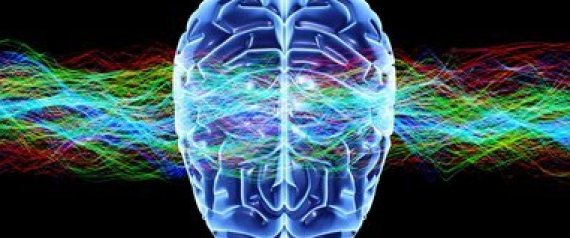Blog
- Rest is Critical Following a Concussion
- By Jason von Stietz, M.A.
- February 27, 2016
-

Photo Credit: Unknown Researchers at Georgetown University Medical Center (GUMC) found that resting after a concussion is of critical importance to restoring brain health. Using an animal model, researchers investigated the impact of weekly versus daily mild traumatic brain injuries in mice. Findings indicated that neuronal connections lost after an injury were recovered within three days. However, when insults to the brain were daily the neuronal connections were not restored and the impact of the injuries were detected in 1-year follow-up. The study was discussed in a recent article in a recent GUMC press release:
Doctors who order several days of rest after a person suffers a concussion are giving sound advice, say researchers, and new data from animal models explains why.
Georgetown University Medical Center neuroscientists say rest — for more than a day — is critical for allowing the brain to reset neural networks and repair any short-term injury. The new study in mice also shows that repeated mild concussions with only a day to recover between injuries leads to mounting damage and brain inflammation that remains evident a year after injury.
“It is good news that the brain can recover from a hit if given enough time to rest and recover. But on the flip side, we find that the brain does not undertake this rebalancing when impacts come too close together,” says the study’s lead researcher, Mark P. Burns, PhD, assistant professor of neuroscience at GUMC and director of the Laboratory for Brain Injury and Dementia.
This first-of-its-kind study, published in the March 2016 issue of American Journal of Pathology, modeled repeated mild head trauma as a means to investigate brain damage that occurs after a sports, military or domestic abuse injury.
Investigators developed a mouse model of repetitive, extremely mild concussive impacts conducted while the mouse is anesthetized. They compared the brain’s response to a single concussion with an injury received daily for 30 days and one received weekly over 30 weeks.
Mice with a single insult temporarily lose 10-15 percent of the neuronal connections in their brains, but no inflammation or cell death resulted, Burns says. With three days rest, all neuronal connections were restored. This neuronal response is not seen in mice with daily concussions, but the pattern is restored when a week of rest is given between each insult, Burns says.
When a mild concussion occurred each day for a month, inflammation and damage to the brain’s white matter resulted. “This damage became progressively worse for two months and remained apparent one year after the last impact,” Burns says.
“The findings mirror what has been observed about such damage in humans years after a brain injury, especially among athletes,” Burns says. “Studies have shown that almost all people with single concussions spontaneously recover, but athletes who play contact sports are much more susceptible to lasting brain damage. These findings help fill in the picture of how and when concussions and mild head trauma can lead to sustained brain damage.”
Georgetown co-authors are first author Charisse N. Winston, PhD, Maia Parsadanian, David N. Zapple, Sonia Villapol, PhD, and undergraduate students David Barton, Tiffany E. Wilkins, Aidan Neustadtl, Deepa Chellappa, and Andrew D. Alikhani. Contributors also include Emmanuel Planel, PhD, and Anastasia Noel, PhD, from the Centre Hospitalier de l'Université Laval, Neurosciences, Québec, Canada.
The study was supported by Georgetown University’s Neural Injury and Plasticity Training Program, the National Institute for Neurological Disorders and Stroke (R01 NS067417), a supplement to Promote Diversity in Health-Related Research, a donation from KPB Corporation, the Canadian Institute of Health Research, Fonds de Recherche en Santé du Québec and the Natural Sciences and Engineering Research Council of Canada.
Read the oringinal article Here
- Comments (0)
- How Trauma Impacts Memory
- By Jason von Stietz, M.A.
- February 20, 2016
-

Getty Images Some events we remember as vividly as the day they happened. Most people remember every detail about the moment they heard about the events of September 11th 2001. However, how accurate are these vivid and detailed memories? According to recent recent research, not very. This phenomenon was discussed in a recent article of CBCNews:
Where were you, on the morning of Sept. 11, 2001, when you learned that a passenger jet had slammed into the North Tower of the World Trade Center? What were you doing? Who were you with?
Memories of that day, which was deeply painful for so many people, might seem indelibly carved into your mind. There's a good chance, however, you retained far fewer details than you think.
Strongly negative or traumatic experiences are processed and encoded through a distinct neural pathway that filters out "peripheral details," says University of Waterloo cognitive psychologist Myra Fernandes.
The more fear or stress that's generated, the more amplified the filtering effect becomes, especially during experiences that threaten our survival.
The brain locks "on the central aspects of the experience at the expense of the peripheral details," she explains. "The gist is maintained but many of the details are lost.
"From an evolutionary point of view, this is totally plausible," because it emphasizes the parts of a recollection that might serve as a warning later, helping us avoid highly stressful situations in the first place.
'The essential details'
The phenomenon is seen specifically in episodic memories — those of lived experiences that are tied to emotions and context.
The reliability of episodic memory took a central role last week in the ongoing criminal trial of former CBC radio host Jian Ghomeshi, who has pleaded not guilty to four counts of sexual assault and one count of overcoming resistance by choking. The charges involve three women.
It's a common tactic for lawyers to dial in on the minute details of a witness's testimony, pressing to expose any possible contradictions in various retellings of the same story and therefore, the theory goes, raise doubts about its truthfulness.
"By asking someone to repeat a story over and over again, essentially you start to see the story unravel," criminal defence lawyer Daniel Brown explained in an interview with CBC's Metro Morning last week.
Those who say they have lived through trauma, however, are sometimes unable to articulate a coherent narrative owing to the brain's tendency to zero-in on only the most essential elements of what happened.
"The person is overcome with all these essential details," says Lori Haskell, a clinical psychologist in private practice and assistant professor in psychiatry at the University of Toronto. Her research partly focuses on how sexual violence affects the neurobiology of survivors.
"So later on when they try to start creating a narrative, those details aren't accurate – they're not recalled with great detail," she adds.
'Durable' memories
Advanced-imaging studies have shown that traumatic experiences cause two relatively tiny areas deep within the brain, called the amygdala, to kick into overdrive. When the amygdala ramp up, there is a cascade effect through the brain.
Elizabeth Kensinger, a cognitive neuroscientist at Boston College, studies how emotion plays into memory formation.
"The amygdala is activated, and that actually affects how the other regions that take part in processing memory are brought online and how they communicate with one another," she says.
Kensinger's research suggests that while extraneous details may be forgotten, the core components may be less susceptible to the various ways time can erode our recollections.
"There's some really interesting evidence that emotional memories tend to be more durable."
A game of 'telephone'
In general, our episodic memories are "prone to distortions" because they are, in essence, a "reconstruction" of events assembled from building blocks stored throughout the brain. The more we recall any single thing, the greater the chance becomes that we'll remove, or even insert, a block that's not supposed to be there.
Fernandes uses the analogy of the classic children's game "telephone."
"When we recall a memory, we relay it down through our brains … Every time the message is passed on, it changes slightly."
A variety of influences can increase the probability that a recollection will contain erroneous bits. Decades of research by renowned American cognitive psychologist Elizabeth Loftus, for example, has shown that simple, well-crafted linguistic prompts can easily lead someone to unknowingly insert or omit false details into the retelling of a story.
That's not to say all memories contain inaccuracies. In fact, generally speaking, the human brain does an extraordinary job of encoding countless experiences every day.
But it would be too overwhelming to retain all of the information we take in throughout our lives. Research suggests that while we sleep, our brains whittle down experiences — not just traumatic ones — into their most useful parts to make more room, like freeing-up space on a hard drive.
"It's beneficial to our emotional well-being to remember the gist rather than every detail," says Fernandes.
Are you sure?
So, how well do you really remember the details of your day on Sept. 11?
When doing research for The Invisible Gorilla — a book exploring the fallibility of the human mind — University of Illinois cognitive psychologist Daniel Simons wrote down his own answers.
He discovered two of the three people he thought he was with on that morning weren't with him at all, and he has no recollection of being with the person who was there. He's not alone.
More than a dozen universities participated in a survey that asked 2,100 Americans from across the U.S. about their memories of Sept. 11, one, three and 10 years after the attacks.
When all was said and done, 40 per cent of participants told stories notably different than the one that emerged from their original answers.
Interestingly as time passed, those whose answers changed significantly did not become less confident about the accuracy of their stories.
The study is part of a huge body of evidence pointing to the reality that memory is malleable, vulnerable to the curious nature of our own neurobiology.
That doesn't mean we should distrust it, says Simons, but rather, we should appreciate its limits.
Read the original article Here
- Comments (0)
- The Frequencies of Top-Down and Bottom-Up Visual Processing
- By Jason von Stietz, M.A.
- February 12, 2016
-

Getty Images Recent research suggests that the visual cortex processes information in two ways: top-down and bottom-up. Utilizing magnetoencephalography, researchers found that bottom-up information flowed through gamma waves whereas top-down information flowed through alpha-beta waves. The study was discussed in a recent article in NeuroScientistNews:
In the brain, the visual cortex processes visual information and passes it from lower to higher areas of the brain. However, information also flows in the opposite direction, e.g. to direct attention to particular stimuli. But how does the brain know which path the information should take? Researchers at the Ernst Strüngmann Institute (ESI) for Neuroscience in Frankfurt in Cooperation with Max Planck Society have now demonstrated that the visual cortex of human subjects uses different frequency channels depending on the direction in which information is being transported. Their findings were only possible thanks to previous research with macaque monkeys. They might help to understand the cause of psychiatric illnesses in which the two channels appear to be mixed up.
The terms “bottom-up” and “top-down” refer to processes by which the human brain processes information. “In the visual system, bottom-up communication occurs when information enters through the eyes and flows from lower to higher visual areas, i.e. from bottom to top,” explains Pascal Fries from the Ernst Strüngmann Institute for Neuroscience.
As soon as a person observes the environment, sensory input is continuously processed using the bottom-up principle. But how do we know that one piece of information is more important than another? Fries: “The top-down principle helps us to do this. The brain uses previous experiences to organize information in the present context and to make predictions on this basis.” The top-down flow therefore influences the bottom-up flow and steers our attention towards things that are important in the current situation. This can happen automatically, for example due to the sudden appearance of a threatening stimulus, as well as through attention, for example when we are looking for something or following instructions. “Many of our cognitive capabilities can only be explained by invoking this principle,” says Fries.
For the top-down principle to work, the brain requires mechanisms that pass information from higher to lower areas of the brain. The anatomical connections in the top-down direction are known for a long time, but how the information is sent through these connections has remained elusive.
Macaque monkeys helped Fries and his colleagues to get on the right track. First, they examined the bottom-up flow in the brains of those animals and found that it uses a particular frequency band of rhythmic neuronal activity, known as the gamma band, around 60 Hertz. Information flows from bottom to top, when rhythmic oscillatory activity of lower brain areas entrains the rhythm of the next higher area.
Subsequently, the neuroscientists discovered the channel for top-down information flow, namely the so-called alpha and beta frequency rhythms, between 10 and 20 Hertz. Thus, in essence, the hierarchically arranged areas of visual cortex use a separate frequency channel to send information from higher to lower areas.
In their present work, the researchers show that a very similar principle is at work in the human brain. “We knew the rhythms and wanted to look for them in the human brain,” explains Fries. To do this, they used a technique known as magnetoencephalography (MEG). MEG uses sensors outside the head to record the magnetic fields, which result from the electric currents of active nerve cells. The measurements allow conclusions to be drawn about the activity in certain areas of the brain. “In the raw MEG data, signals from several brain areas are mixed and have to be separated as well as possible using advanced mathematical methods,” says Fries.
This is one of the reasons why the investigations into the macaque brain were so important. As macaques have a very similar brain to humans, scientific insights obtained on macaques can often be transferred to humans. It was thanks to the previous work on the animals that the researchers were able to interpret the MEG measurements correctly.
In their experiments, the researchers demonstrate that the human brain also uses different frequency ranges for bottom-up and top-down signalling. Furthermore, the neurophysiologists were able to describe the hierarchical positioning of additional areas, some of which only present in the human brain. A total of 26 areas were investigated in the human brain.
The new findings might help us to better understand the causes of some psychiatric illnesses to one day be able to treat them. In some mental illnesses, the top-down and bottom-up flow seem to get mixed up. There are indications that in individuals with schizophrenia, the top-down flow does not interact with the bottom-up flow in a normal way. “A healthy person can distinguish between sensory inputs and their interpretation produced in higher areas. For example, they can see facial features in a cloud without thinking that the cloud is a face. Schizophrenic patients may think the face is real, potentially taking the top-down interpretation for a bottom-up sensation,” explains Fries.
Read the original article Here
- Comments (0)


 Subscribe to our Feed via RSS
Subscribe to our Feed via RSS